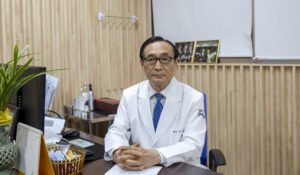



Director Kim explained, “Dr. Weber, a developer from Germany, studied meridian theory in China and devised a method of investigating both internal and surrounding meridians, which has led to the development of a therapeutic approach that received the Nobel Prize in Physiology or Medicine.”
He further elaborated, “In practical application, the use of all four types of light in photodynamic therapy, through devices such as broad-spectrum light watches and panels, has shown beneficial effects in conditions including cancer, musculoskeletal disorders, and dermatological conditions. Additionally, helmets utilizing only red light have been utilized in the treatment of various ailments such as Parkinson’s disease, dementia, post-stroke sequelae, otolaryngological disorders, and psychiatric disorders.” Director Kim also presented diverse clinical cases demonstrating the potential adjunctive therapeutic effects of traditional Korean medicine.
Meanwhile, while photodynamic therapy is mainly being applied by doctors in Taiwan, the research society plans to hold a joint seminar with Taiwan in March. They also have future plans to enhance therapeutic effects through continuous research on LED light, photosensitizers, and other related areas.
akomnews
http://news.kmib.co.kr/article/view.asp?arcid=0015712693&code=61141111&cp=nv
ⓒ2023 Healand Corporation. All Rights Reserved.